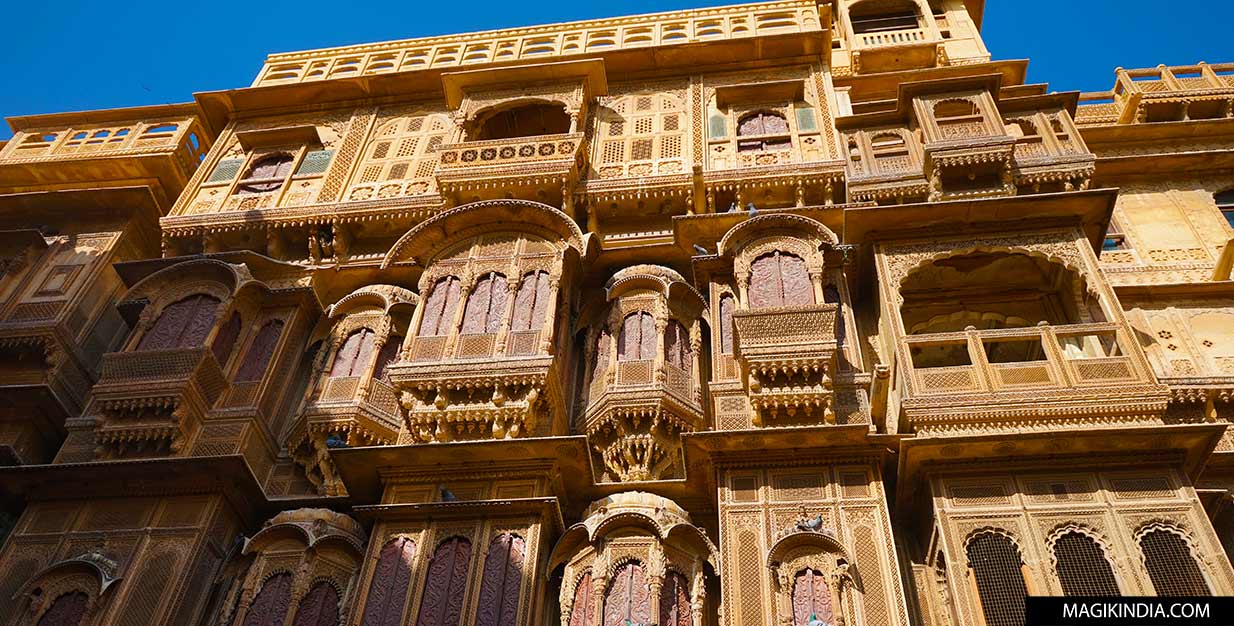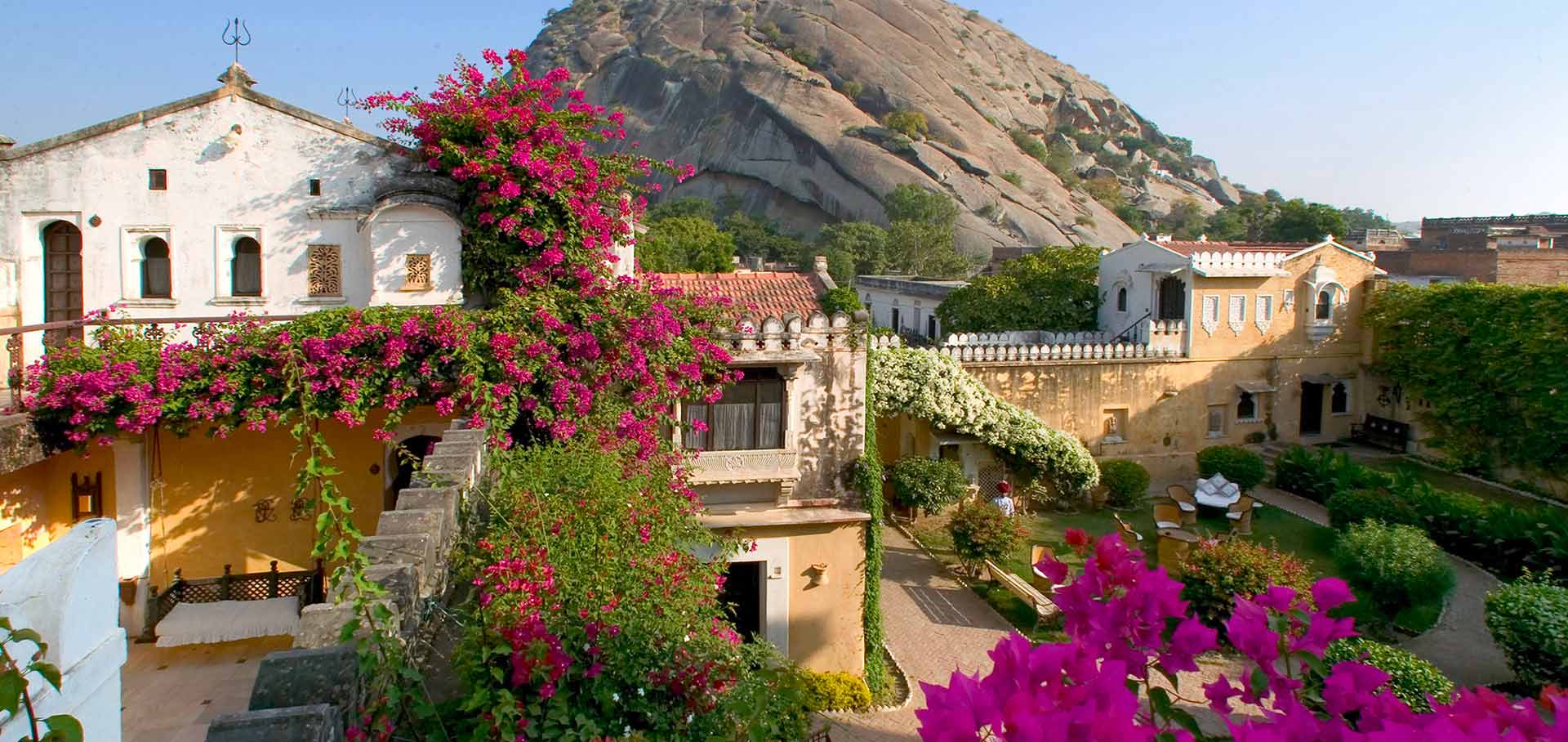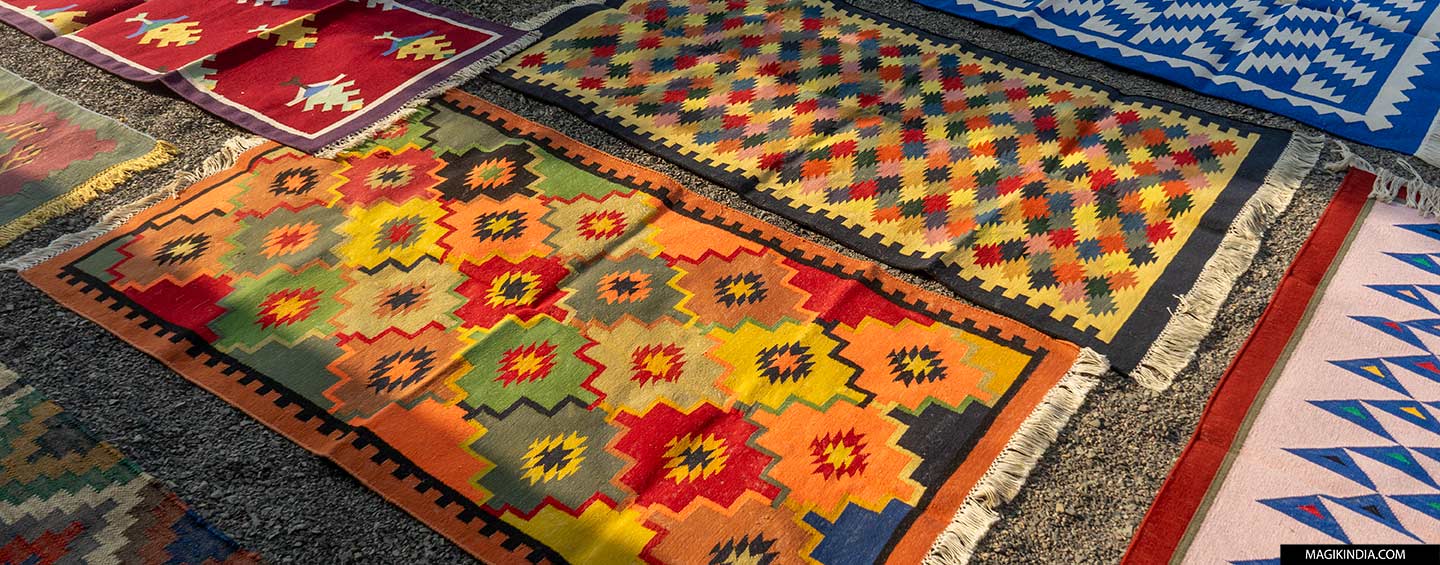
Salawas and its Panja Dhurrie tradition
In an India undergoing constant transformation, where ancestral traditions are gradually giving way to rampant modernity, the village of Salawas, nestled on the outskirts of Jodhpur in Rajasthan, embodies a silent resistance. Here, dhurries, flat hand-woven rugs, are much more than simple decorative objects: they are the living reflection of ancestral know-how passed down from generation to generation. Each thread, each pattern, each color tells a story, that of a craft rooted in Rajasthani culture. At a time when standardisation threatens regional particularities, Salawas perpetuates the art of dhurrie with rare fidelity, making this village a precious bastion of Indian textile memory.
Dhurrie and Carpet
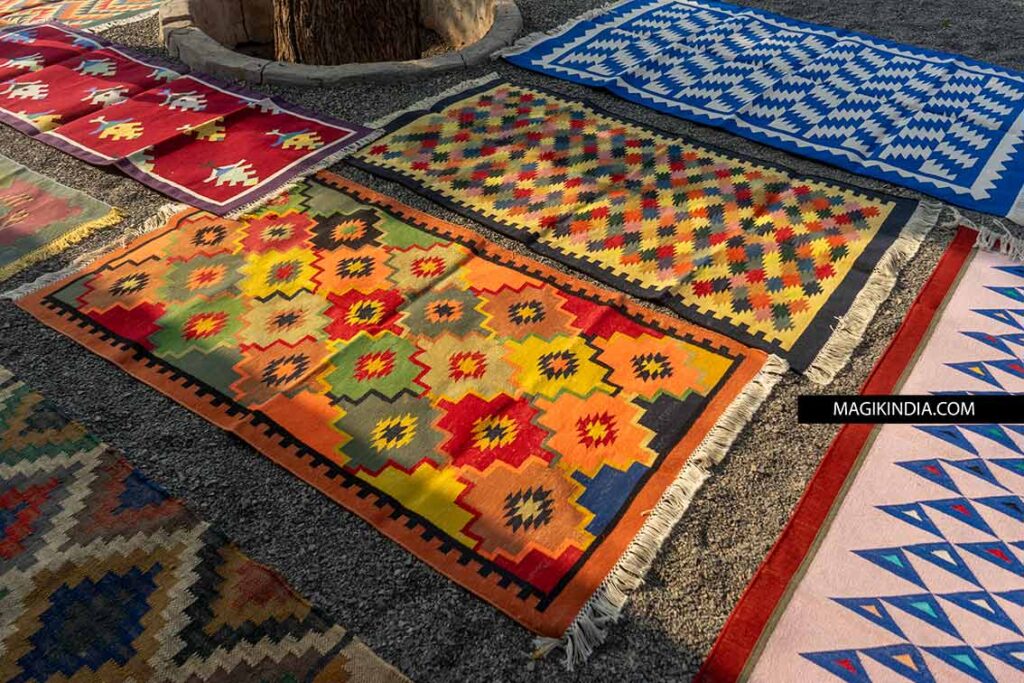
The dhurrie is a unique concept.
Unlike rugs, dhurries are not hand-knotted, but rather woven flat on horizontal looms, giving them a light yet strong texture.
They are often made of cotton, sometimes wool, hemp, or silk, and are distinguished by their geometric patterns, clean lines, and vibrant colors, often inspired by nature or daily life in the desert.
Another unique feature is that they are reversible.
Origins
In the Jodhpur region, dhurry weaving is an ancestral skill. The family of Pukhraj Ji, an emblematic figure of a highly renowned family of artisans, has been perpetuating this tradition since the 14th century.

Originally, Salawas dhurries were made from goat, sheep, and camel wool provided by the Rabari community. Over time, the materials evolved, and today, cotton is the primary fiber, often supplemented with wool and silk.
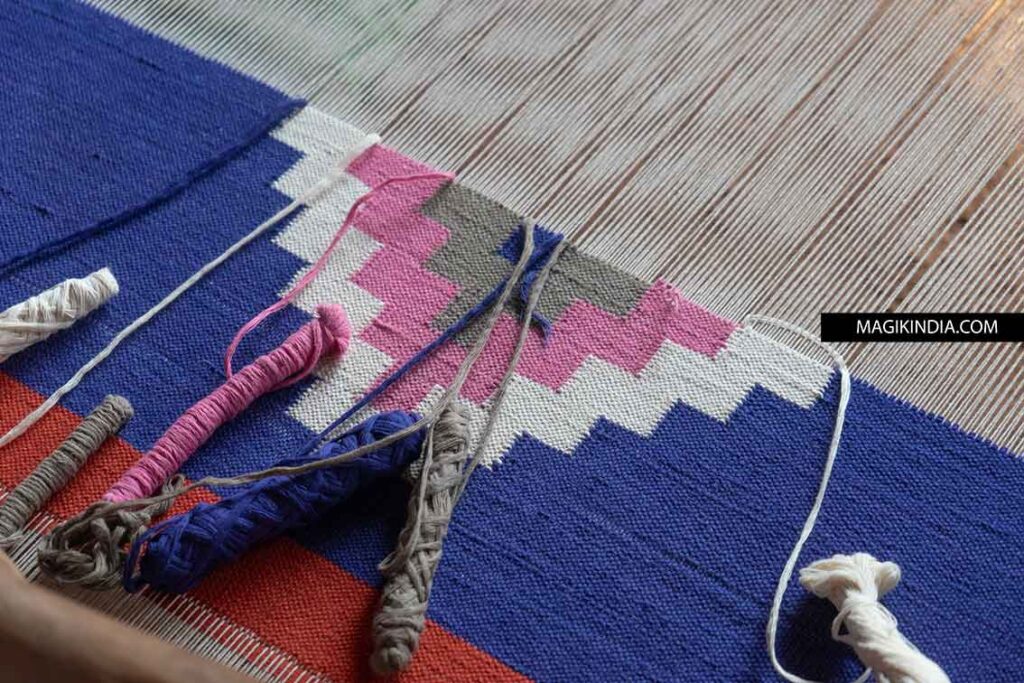
Traditionally, dhurries were handwoven by members of rural communities within the family. They were designed for a wide variety of uses: floor mats, bed covers, tablecloths, and even as carrying bags. Their lightness, reversibility, resistance to wear, and ease of maintenance, combined with good insulation, made them very practical.
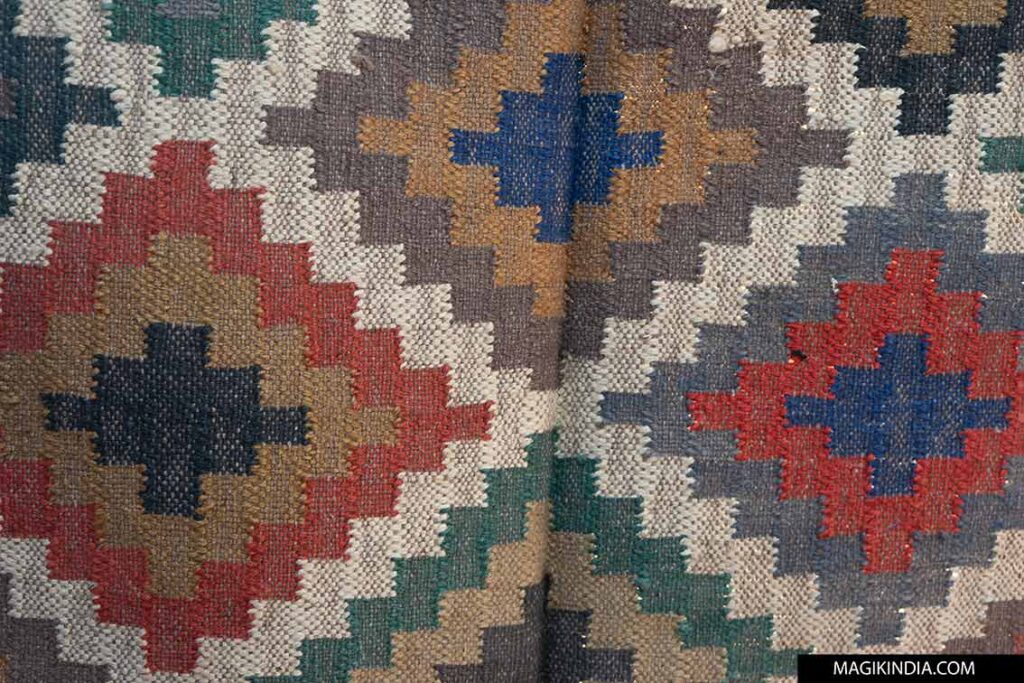
Early dhurries were mostly made in natural colors (white, black, brown), faithful to the hues of the animal wool used. After being spun on a charkha, the yarns are now dyed mainly with natural or vegetable dyes (indigo, turmeric, henna). However, the use of chemical dyes is also common today.
The technique of Dhurrie in Salawas
Salawas artisans use horizontal looms that are very simple in design. This is a flat weaving technique.
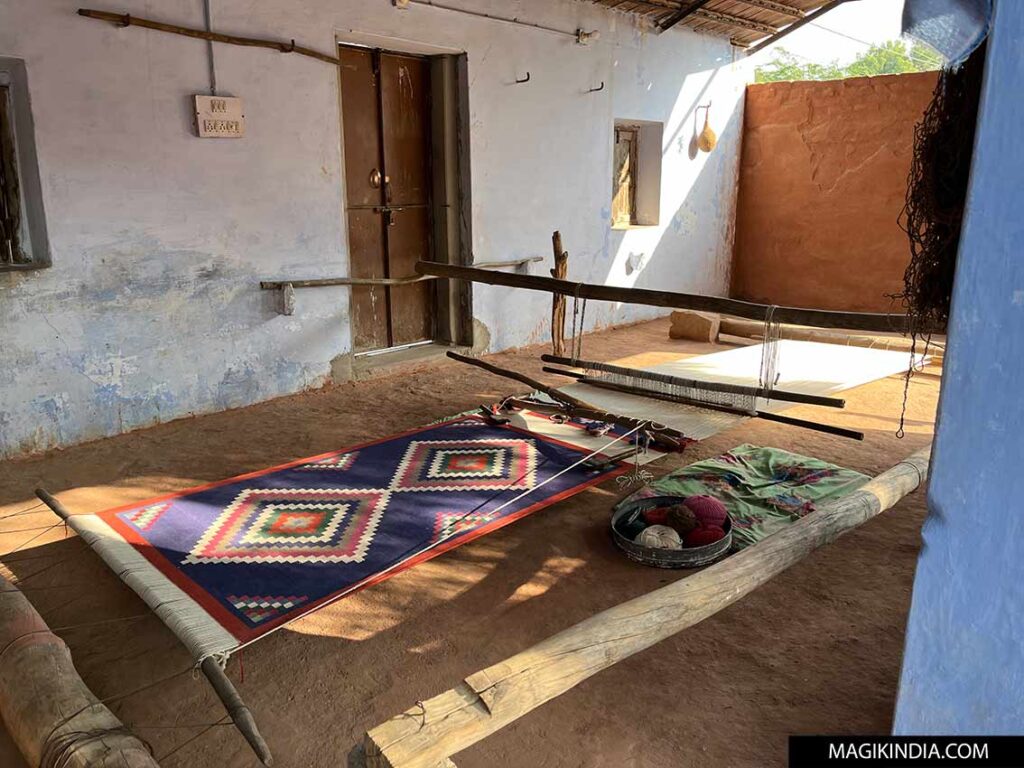
The loom is held in tension on both sides by beams (“latha”) anchored to the ground by stones.
The warp is the vertical, basic thread of white cotton that forms the structure of the dhurrie. The weft is the horizontal thread, of various colors and materials (cotton, wool, silk), which is inserted through the warp to create the patterns.
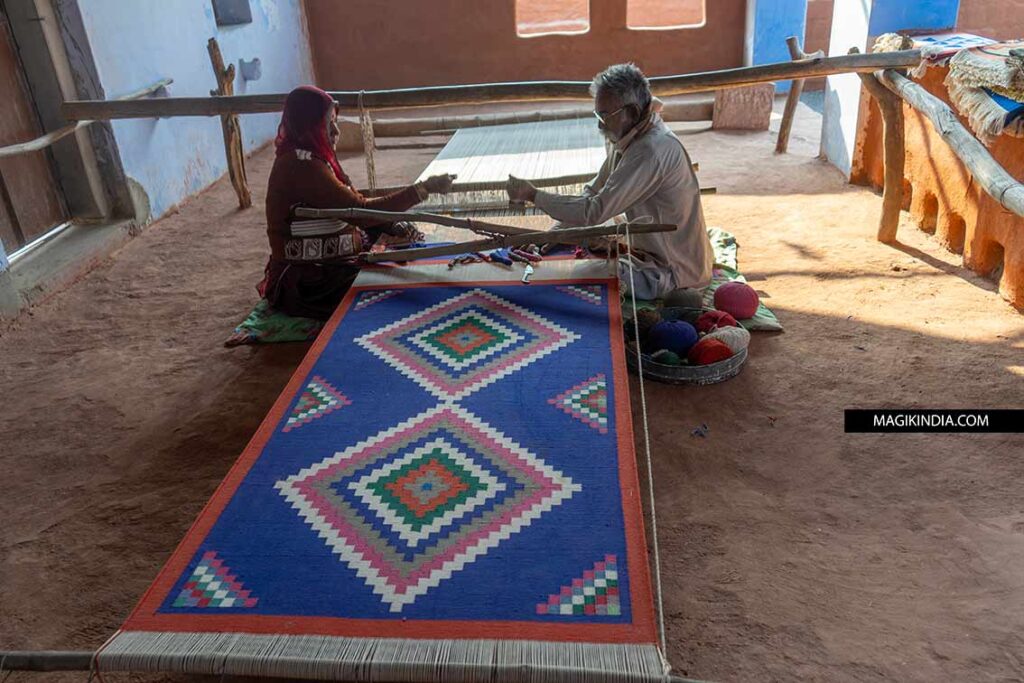
The craftsman sits low to the ground to work, often with his legs crossed.
The weft threads are interwoven with the warp threads without creating knots or loops. For colored patterns, the weft threads of different colors are interwoven so that there are no spaces between the colors, creating a smooth, continuous surface. This technique allows the dhurries to be reversible, as the pattern is identical on both sides.
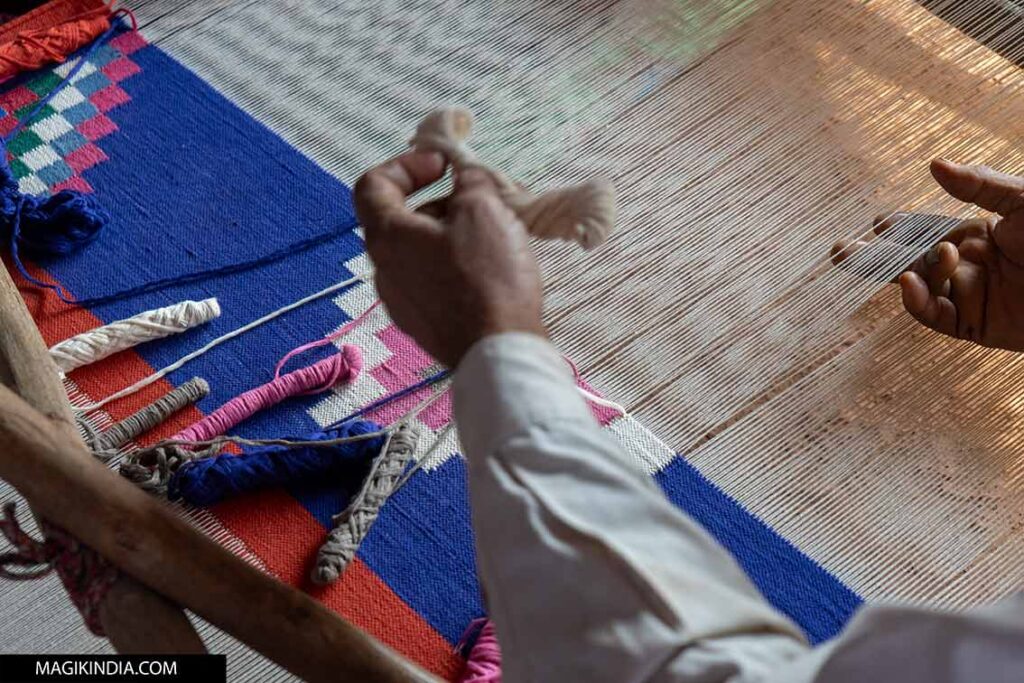
The essential tool for dhurries is the “panja” – a kind of wooden comb with metal prongs. It is used by the weaver to pack the weft threads firmly after each pass. This helps tighten the weave, make the dhurrie dense, and keep the patterns neat. For this reason, the dhurries of Salawas are also called “Panja Dhurries.”

Dhurries of Salawas
The dhurrie was not only a functional object; it also reflected the visual and symbolic culture of the region of origin. Each pattern, each color combination evokes a local identity, social status, or religious significance. Thus, the dhurries of Rajasthan, Madhya Pradesh, Tamil Nadu, and Uttar Pradesh each exhibit distinct styles.

Salawas is known for his vibrant geometric patterns and bold colors, using hues of deep reds, bright yellows, and brilliant blues. These include simple and complex shapes such as squares, rhombuses (diamonds), triangles, circles, zigzags, and chevrons.
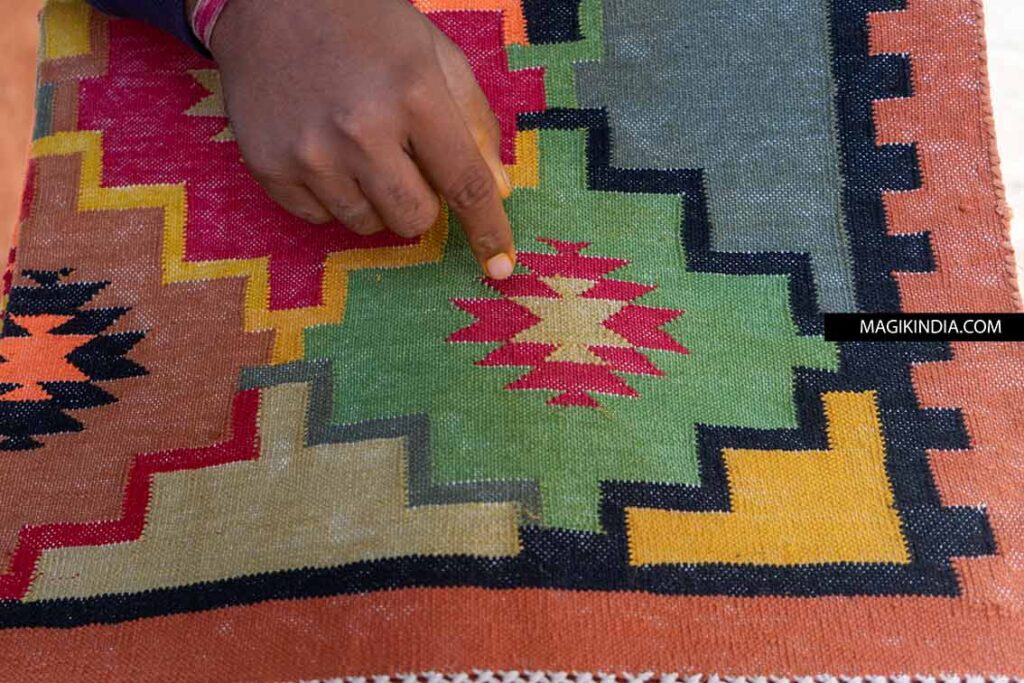
Weaving is a strong family tradition in Salawas, passed down from father to son, and now also to daughters. Around 200 families in the village were initially involved in dhurrie production.
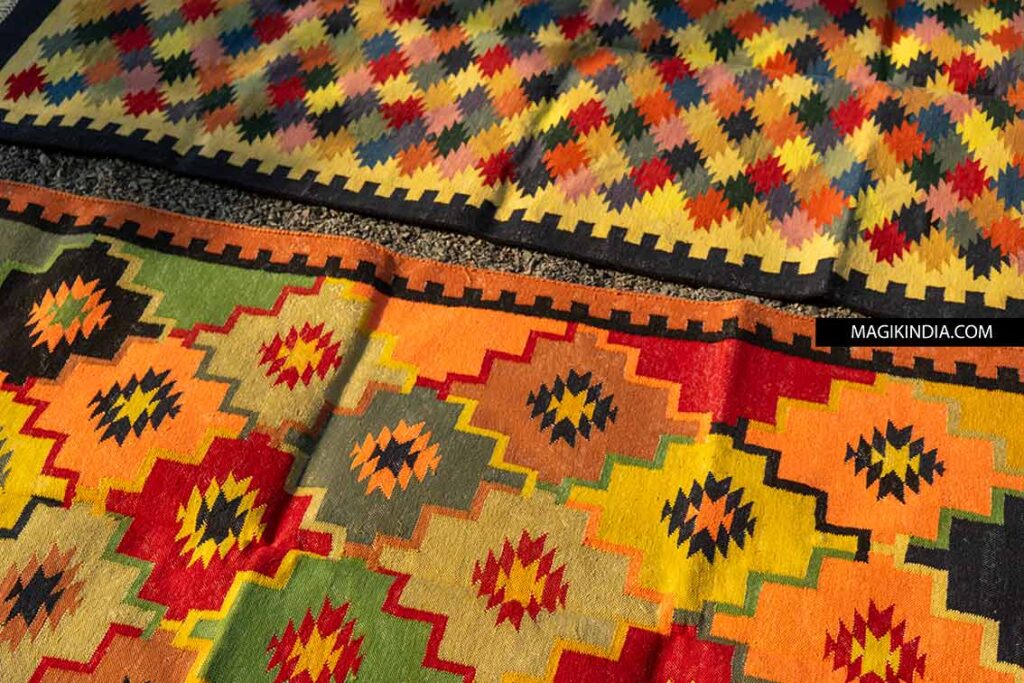
The most famous weaving family is that of Pukhraj ji and his wife Dariya Devi. In the 1970s, Pukhraj ji began organizing safaris to Bishnoi villages, which introduced their craft to royal dignitaries and hoteliers. Their three sons took over, and since then, the dhurries of Salawas have gained international recognition.
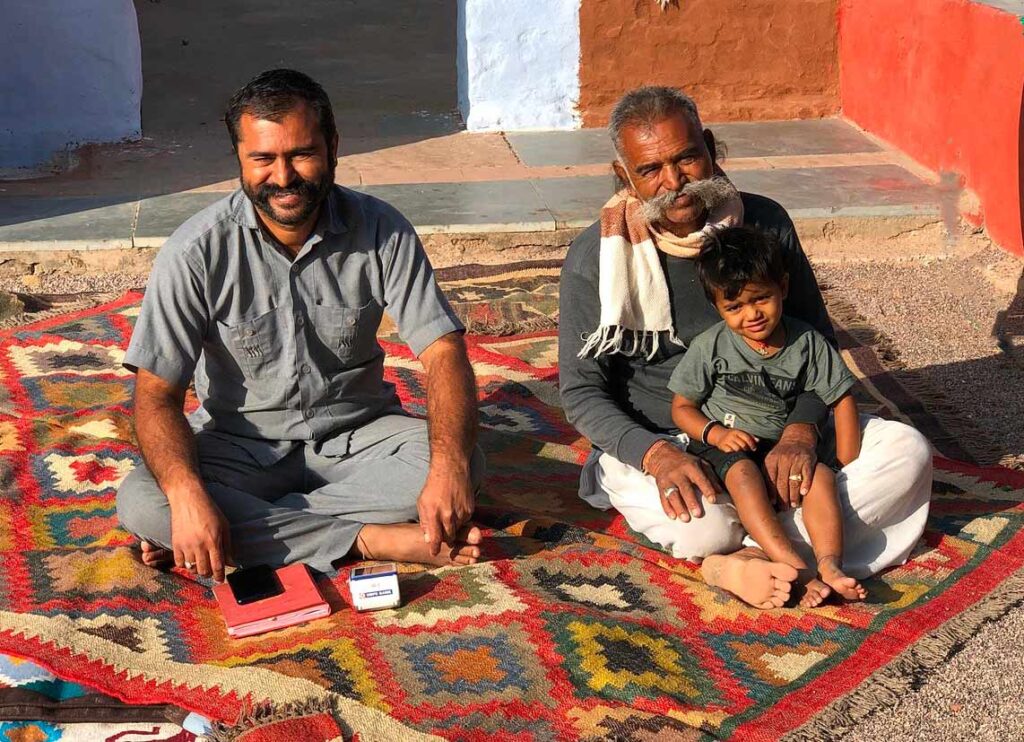
Also to see around Salawas
Beyond its famous dhurries, Salawas offers a glimpse into the culture and nature of Rajasthan, particularly through its proximity to the Bishnoi community, an ethno-religious group deeply respectful of nature and animal life.
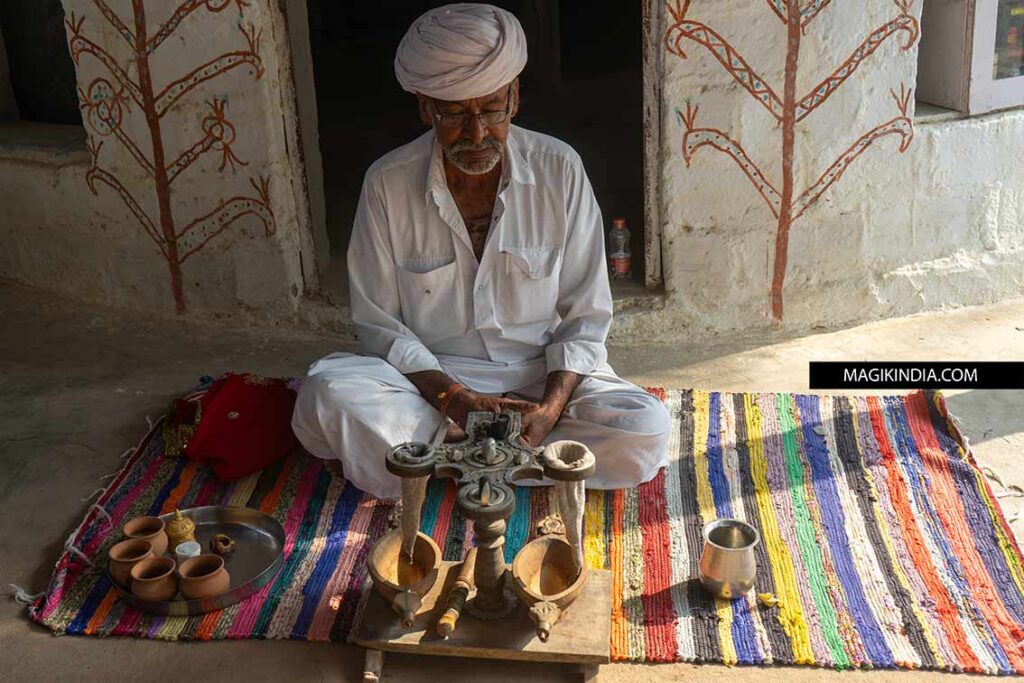
Among the Bishnois, you can witness the traditional opium ceremony, the “Amal Sabha”, an ancient social practice where opium (very diluted) is consumed in a ritualised manner.
(It is important to note that while opium possession and consumption are illegal in India, authorities tend to turn a blind eye to these traditional ceremonies because of their deep cultural roots and, moreover, they are not addictive because they are very occasional.)
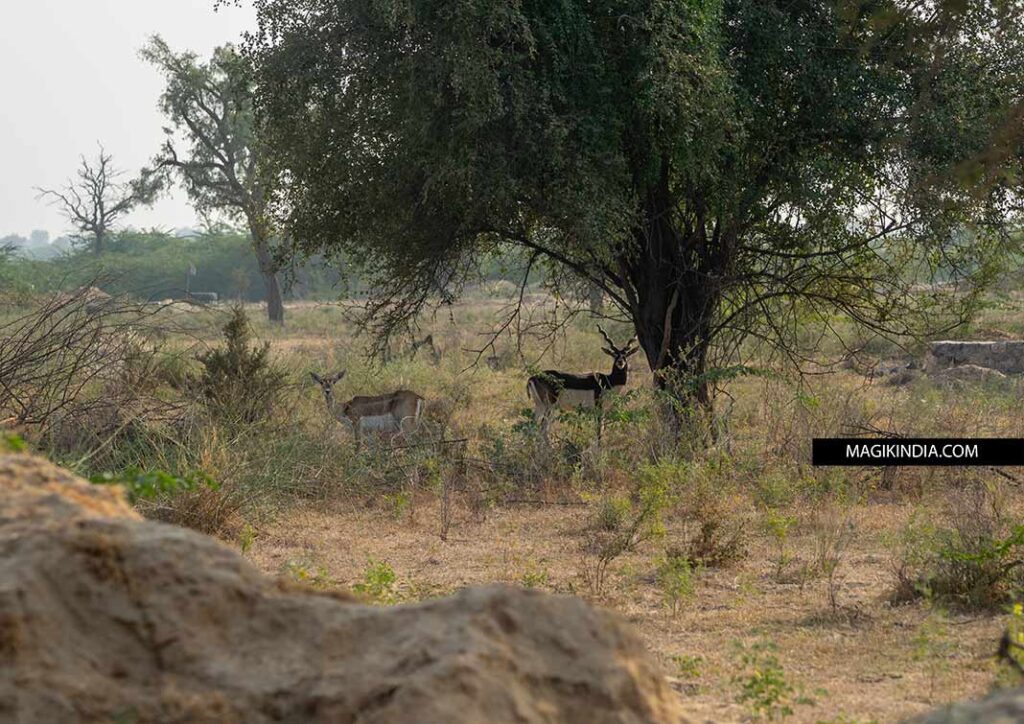
The village also offers the chance to see chinkaras (Indian gazelle) and the Indian blackbuck (Indian antilope)) roaming freely, a testament to the devoted protection they receive from the Bishnoi community.
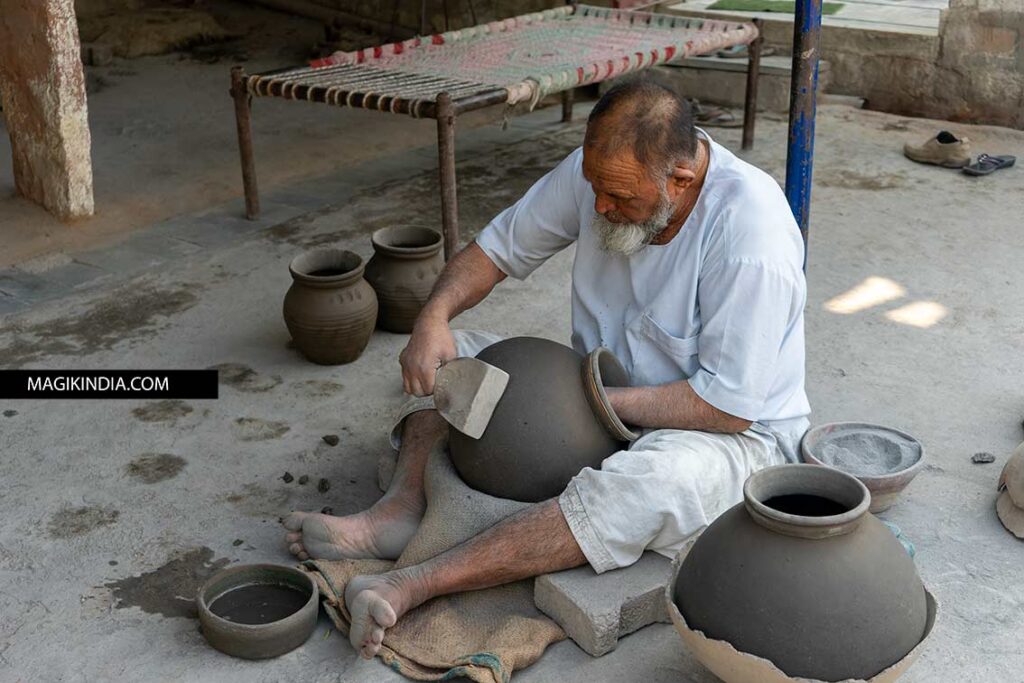
To complement the village’s artisanal diversity, Salawas also has potters who work the earth using traditional techniques.
How to get to Salawas?
- By train: The nearest railway station is Salawas (station code: SZ). Numerous trains serve Salawas from Jodhpur and other cities. You can check timetables on websites like redBus or MakeMyTrip.
- By car/taxi/tuk-tuk: Salawas is about 20 km from Jodhpur. You can hire a taxi or take a tuk-tuk from Jodhpur. The journey takes about 30 minutes.
- By bus: Local buses depart from the Jodhpur bus station.
Salawas is a small town, so it is easy to get around on foot, by bicycle or by motorbike once you are there.
Where to stay in Salawas?
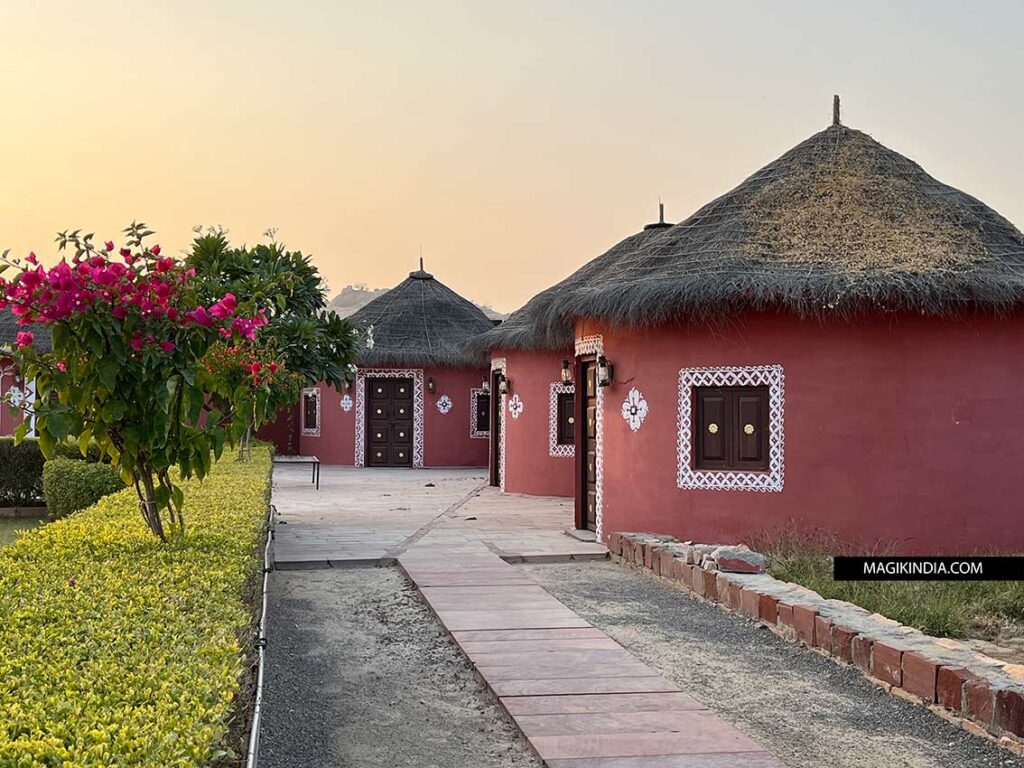
You can stay in the many hotels in Jodhpur (just 1/2 hour from Salawas) but the most authentic option is to stay directly in the guesthouses run by local artisan families, especially those involved in dhurrie weaving.
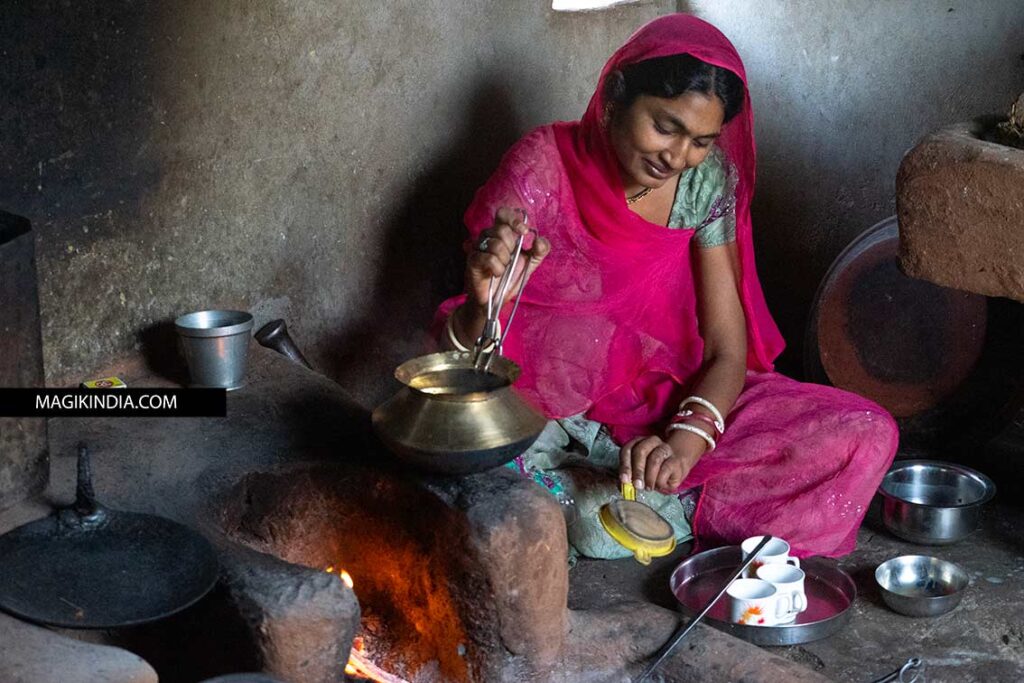
Among the many welcoming families, Pukhraj ji’s stands out as the founder of “Chhotaram Prajapat’s Homestay.” This unique guesthouse offers comfortable traditional huts and unparalleled hospitality. Visitors can enjoy authentic Rajasthani meals cooked over an open fire. Last winter, I had the pleasure of tasting their delicious bajra ki roti (millet pancake) and succulent haldi ki sabzi (turmeric curry).





